Gravel bike conversion: Can your current bike become a gravel grinder?
Everything you need to know to convert your old road or mountain bike into a budget gravel bike
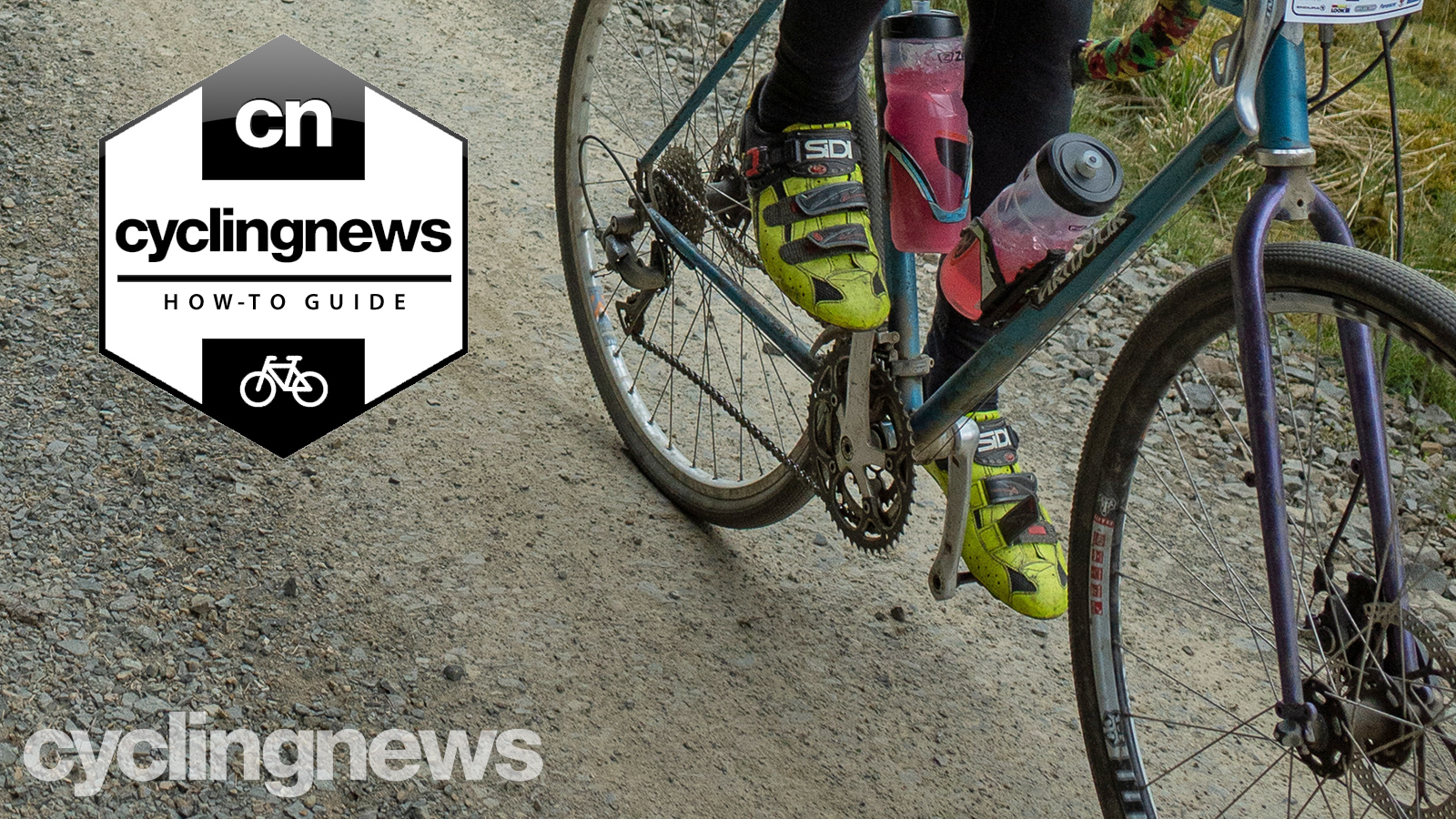
There are plenty of gravel naysayers out there (don't think we don't read your comments) that dispel the popularity of modern gravel bikes as merely a fad perpetuated by bike companies to make you spend money. “This isn’t new, it’s just mountain biking from the nineties” they proclaim, there is some truth in what they say, but they're forgetting one important thing. Gravel riding is a lot of fun.
Best gravel bikes: Fun and fast adventure bikes for your next off-road ride
Should I buy a gravel bike? The pros and cons
Gravel bike clothing guide: the best kit for gravel riding
Escaping the cities, crowds and busy roads, gravel riding opens up a much wider opportunity for riding unrestrained by the road network. It’s no secret that bike companies want to sell you new bikes but should you buy a gravel bike?
With a few modifications, it's possible to convert an existing bike or frameset into a gravel grinder for very little cost. Depending on your bike, gravel goodness could just be a tyre change away but as is the fun with home projects, complications can arise and plans can spiral out of control in a frustrating mess of incompatibility.
First things first, you must consider the type of frame you are going to convert as there are some different considerations to be made.
Road bike gravel conversion
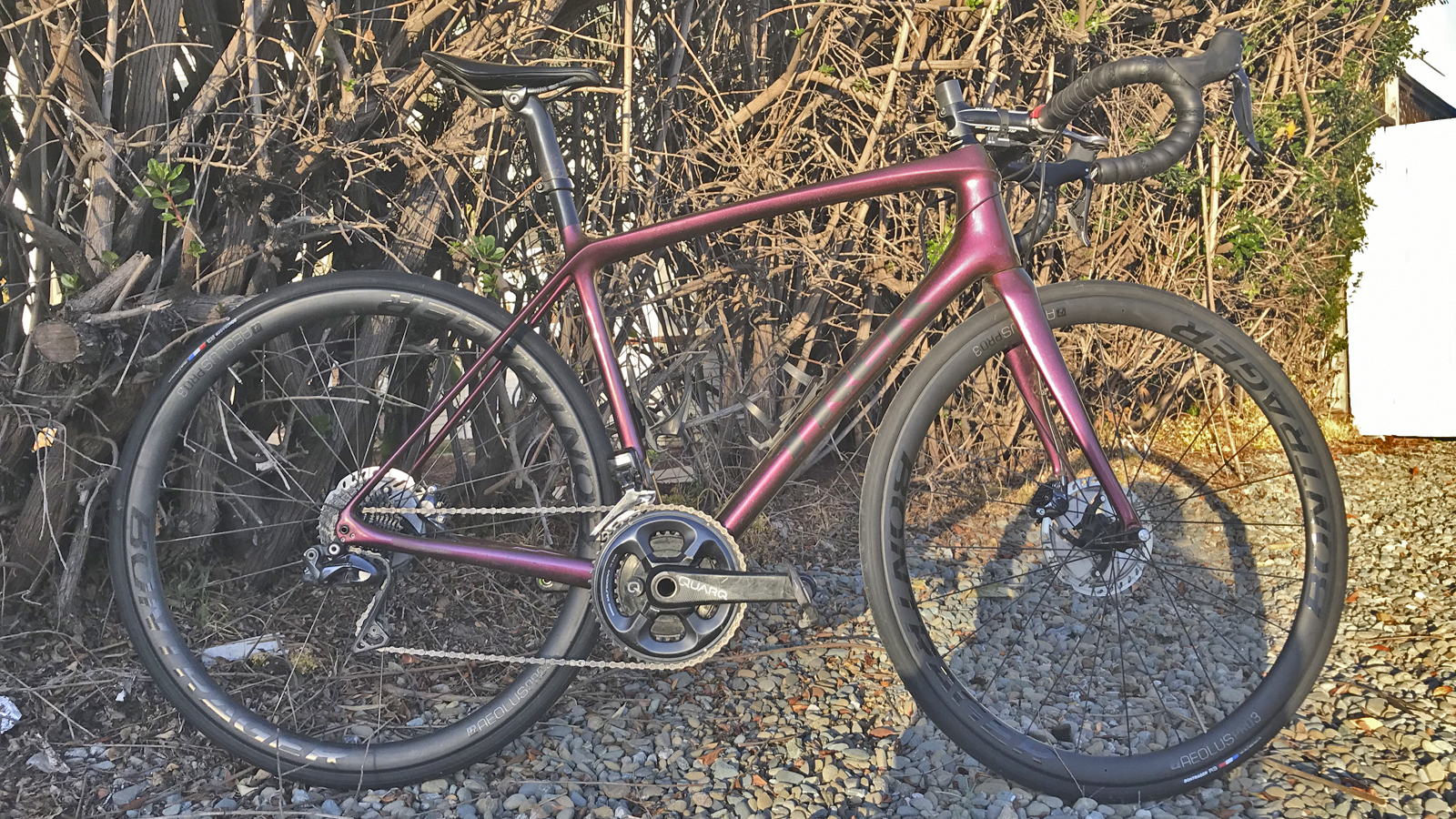
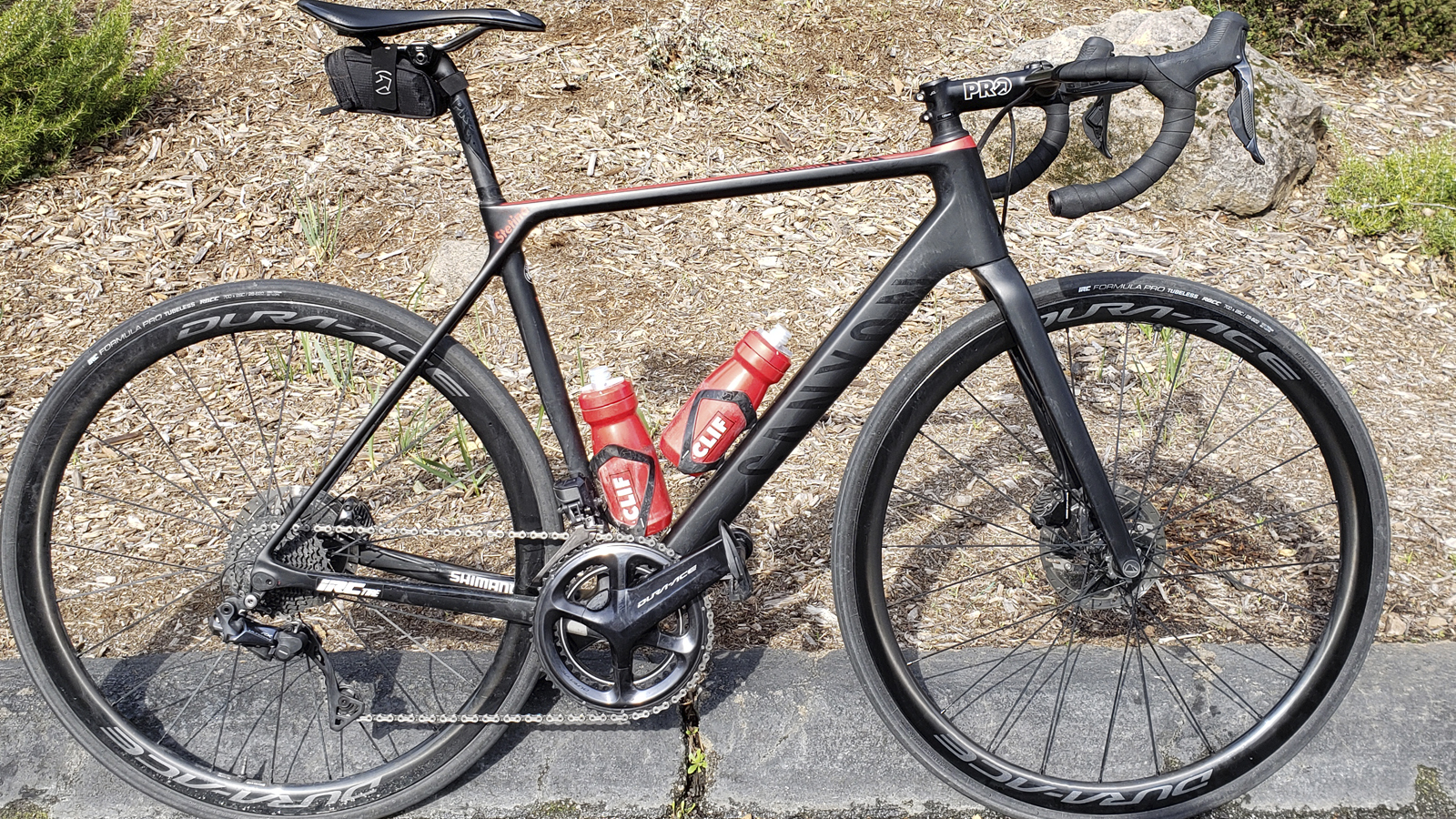
Depending on the severity of your local gravel track, a road bike will happily take on some light gravel grinding. While geometry may not be as long and slack as the Best gravel bikes, converting an old frame or bike is an excellent way to dip the toe into gravel riding. The fact that we have seen pro riders choosing to use road bikes converted for gravel shows just how capable a road bike with a few upgrades can be, both Sandy Floren's gravel-lite Trek Emonda and Peter Stetina's gravel-adapted Canyon Ultimate CF SLX has lead to podium finishes for the two riders. However, we'd recommend sticking to easy, light gravel and avoid any challenging terrain. Keep reading as we break down the most important considerations when converting a road bike to go leave the tarmac behind.
1. Tyres and wheels
Tyres are the first and most important upgrade, swapping out slick road tyres to chunkier gravel tyres will boost grip and help ward off punctures. This will exclude racy frames that were designed around 23mm tyres however endurance, touring and cyclocross frames generally have girthier spacing to fit bigger rubber. Touring bikes and cyclocross bikes may not even require a tyre change although modern gravel tyres will be better suited for the task in hand.
Measuring around the seat stays, chainstays and fork should indicate how much clearance you have, remember to account for mud clearance and variables in tyre sizes between brands. If you are using rim brakes, the clearance between the calipers must also be considered.
Get The Leadout Newsletter
The latest race content, interviews, features, reviews and expert buying guides, direct to your inbox!
It is worth checking your inner rim diameter (IRD) as older rims are a lot narrower than modern road rims and tiny compared to the huge IRDs of the gravel bike rims that are now available. The problem with a narrow rim is that it makes a larger tyre form a light bulb shape and reduce ride quality and grip. Many rim tyre compatibility charts will not recommend a 35mm tyre on a rim smaller than 17mm. These charts are generally pretty conservative and we have had no problems running 35mm tyres on rims as small as 14mm. That said, all tyres and wheels are different and going beyond the recommended manufacturer widths runs the risk of injury, tyre failure, a voided warranty and is at your own risk.
If tyre clearance is tight on a disc brake-equipped bike, swapping to a 650b wheel could increase the tyre size potential. We have seen some bikes that would normally max out at 28mm manage to squeeze tyres up to 38mm in 650b format. This is obviously frame-dependent so it is worth testing before committing to a new set of wheels.
Opting for a set of wheels that are tubeless will help with comfort and grip. Tubeless may require some additional setup time but the rewards are well worth it. Supple tyres deform to the trail and offer a smoother ride and more confident cornering. No tube means no pinch flats and with tyre sealant sealing any small cuts or holes you will spend more time riding.
2. Gearing
Road cassettes use quite a narrow range and although road gearing will work fine for most riding, if you are planning on tackling steep gravel climbs or want to go for a 1x setup, a large cassette will be needed for more gear range. A short cage rear derailleur won't be able to handle larger cassettes however the WolfTooth Roadlink solves this problem and will save the need to buy a new rear derailleur.
For an on-trend 1x gravel setup you will need a clutch equipped derailleur and a narrow-wide chainring for the best results. Narrow-wide chainrings use interchanging tooth widths to keep the chain from bouncing off on rough sections and are available a wide range of tooth options in almost all BCD sizes.
3. Pedals and shoes
Upgrading from road pedals to mountain bike pedals is a small upgrade that can offer some sizable improvements in riding experience. Mountain bike pedals are usually two-sided, won't get as clogged with grit and mud and will assure easier clipping in and out of the pedals. Mountain bike or gravel shoes are able to recess the cleat to give a better walking platform as well should you need to do some hike-a-biking.
4. Handlebars and bar tape
Most road handlebars will work for gravel, however, it might be worth swapping a lightweight carbon bar with something a little more impact-resistant just in case, and choosing a wider bar than you would normally use on the road will help improve control. Gravel specific handlebars will further enhance control on descents by adding flare to the drops putting your hands in a more comfortable position. Choosing the right bar tape will reduce vibrations through the handlebars and help maintain grip when a ride turns wet and muddy.
Mountain bike gravel conversion
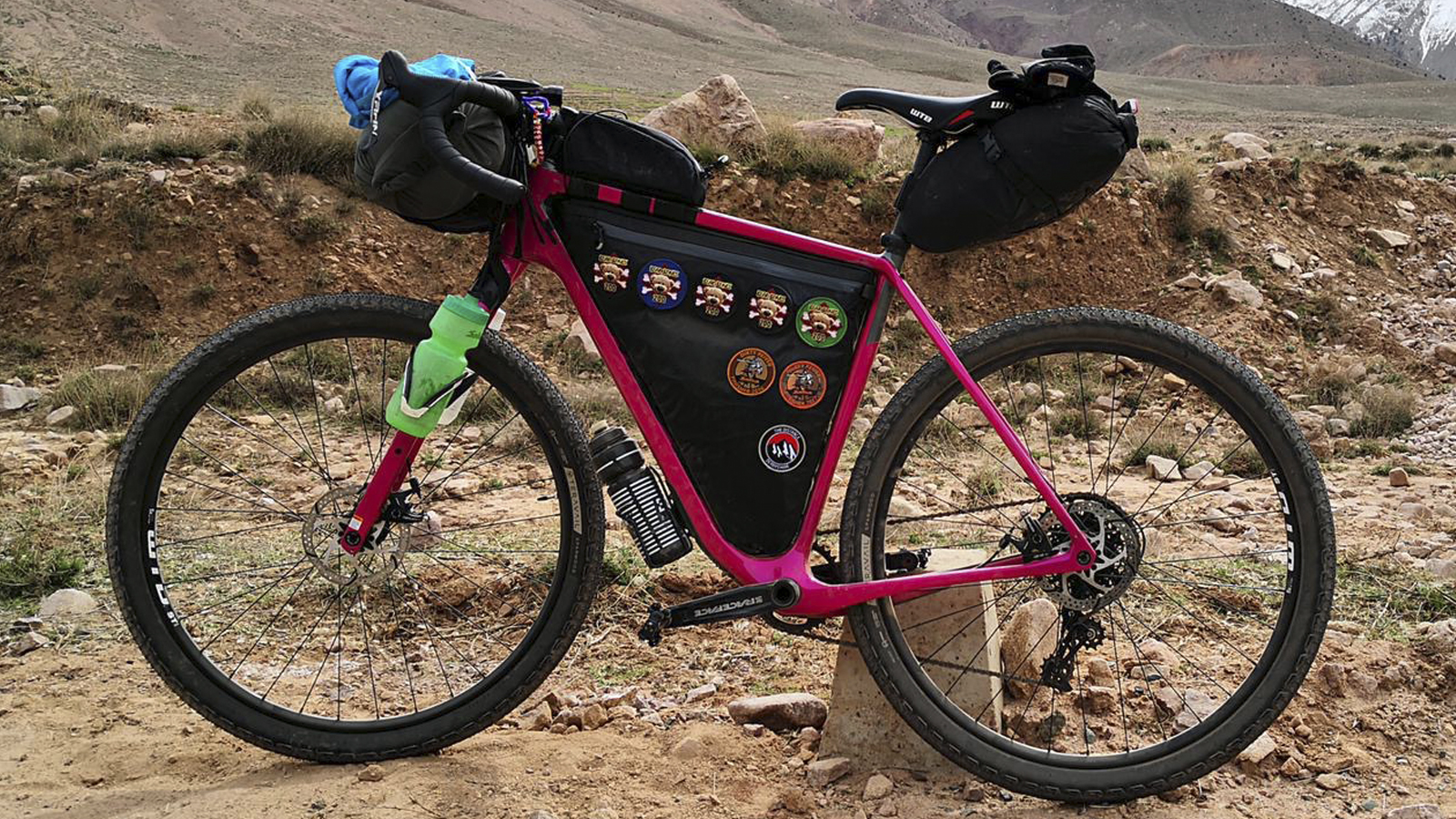
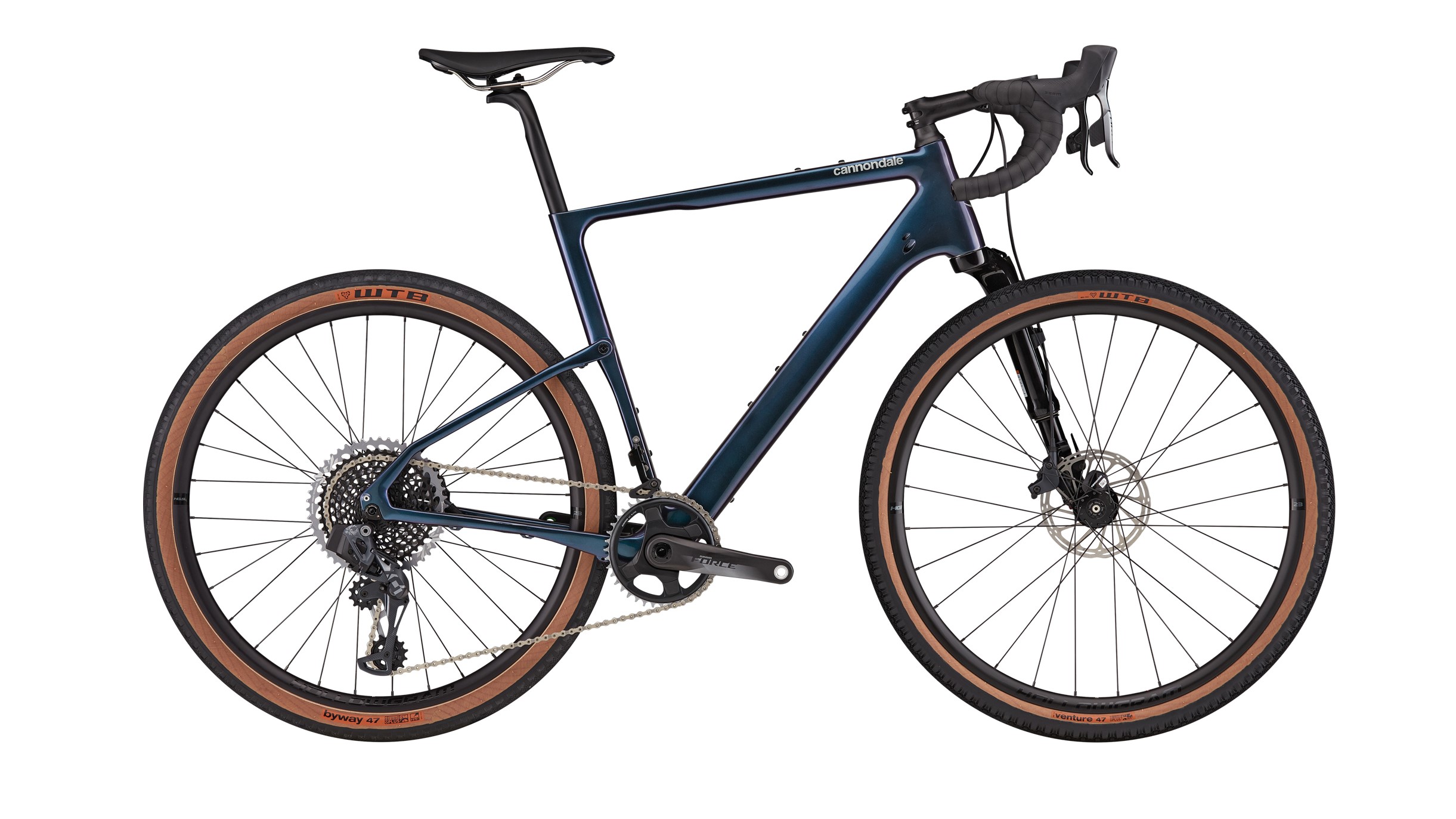
A mountain bike is going to be a bit easier to convert as they are already equipped with big tyre clearance, wide gear ranges and stable offroad geometry. Converting mountain bikes to gravel bikes is nothing new. The term monstercross has been around for years, the act of modifying a mountain bike with drop bars and fast-rolling tyres to offer a rugged endurance off-road bike. Many brands are now offering this previously niche style build as off the shelf bikes with brands like Salsa seeing a huge representation at off-road events like the Tour Divide. Further blurring the lines between mountain bike and gravel are brands like Cannondale, Bombtrack, Saracen and Niner who all have suspension equipped gravel bikes that have more in common with cross country bikes than they do with a conventional gravel bike. Here are the most important considerations to turn your old singletrack shredder into a mile-munching gravel bike.
1. Tyres and wheels
Mountain bike tyres are going to be more than tough enough for gravel riding although on a long ride you will probably find yourself wishing for something a bit faster. A smoother tread pattern will reduce rolling resistance and thinner casings will save some weight as well.
Gravel tyre options for older 26in wheels will be limited so it may be worth fitting some 700c or 650b wheels to increase tyre choice. As the 700c is 31.5mm larger in radius, you will need a good amount of pad adjustment on rim brakes. Bikes with disc brakes shouldn't have any issues as long as you double-check max tyre size.
2. Gearing
As steep offroad ascents are a common occurrence in mountain biking, the gearing on your existing mountain bike that you're converting is likely to have plenty of range to tackle even the meanest gravel climb. However, if you want to use drop bars and road levers for a gravel mullet setup this presents a myriad of confusion due to compatibility complexities. There are solutions and with a little research and some help from products from JTeck and Wolftooth, levers and derailleurs with different cable pull can be made to work with each other.
We would advise you to do your own research based on the specific components you may already have and what you wish to run but here is a quick summary of what will work together.
Shimano mountain bike and road pre-10 speed groupsets will generally play well with each other and levers and derailleurs can be pick-and-mixed however you please. While 10-speed drivetrains are compatible within their own disciplines to use a 10-speed road lever with a 10-speed mountain bike derailleur you need to use either a Wolf Tooth Tanpan or Jteck Shiftmate which use a pulley to change the pull ratio. Shimano’s 11-speed is the same although it uses a different pull ratio than 10-speed.
Sram is a little more universal. Their 7-, 8- and 9-speed road and mountain bike components are all interchangeable. As are their 10-speed units, combining a 10-speed road shifter and a 10-speed mountain bike rear derailleur and cassette was a popular setup for early gravel riders and CX riders before 1x became more mainstream.
Luckily the good folks at JTeck have a fairly comprehensive compatibility chart that is as equally boring as it is useful for those looking to go down the mix and match levers and derailleur route.
If this is all too much there is always the option of going for bar-end shifters, although this means foregoing the ergonomic convenience of the integrated shifter and brake levers.
3. Handlebars
We have already touched on the complications of upgrading to drop bars and while flat or riser bars will work fine for longer distances, some will prefer the increased hand position options that drop bars offer. Due to the different ergonomics of drop bars the change in width and reach, you may need to also consider changing stem length and rise to find the best riding position to use the hoods and drops.
Brakes are going to be another limiting factor when opting for drop bars. Cable brakes may use different pull ratios although this can be rectified with similar pulley adjusters to the ones previously discussed for the gears. Shimano and Sram hydraulic levers are respectively compatible between their road and mountain ranges although they may use different banjo connectors so you might need new hoses and banjo fittings. If you want hydraulic power with the convenience of cable, upgrading to a TRP HY/RD caliper could be a convenient middle ground.
Graham has been part of the Cyclingnews team since January 2020. He has mountain biking at his core and can mostly be found bikepacking around Scotland or exploring the steep trails around the Tweed Valley. Not afraid of a challenge, Graham has gained a reputation for riding fixed gear bikes both too far and often in inappropriate places.